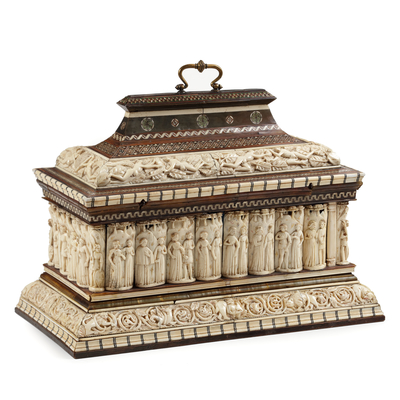Set of board game markers, Leinhart Danner
Global shipping available
- Origin
- Nuremberg, Germany
- Period
- C. 1550
- Material
- Boxwood
- Height
- 1 cm
- Diameter
- 3.5 cm
- Museums
A similar set is located in the Philadelphia Museum of Art, Accession number; 1930-64-86a--n
Questions about this object?
Please use one of the contact options below:
Description
This set of board game markers with busts of ancient Roman Emperors and Empresses is attributed to Leinhart Danner (1497-1585). Around the busts are laurel wreaths. Danner became a citizen of Nuremberg in 1540 and entered the service of the city in 1554. He distinguished himself by his ingenuity in his profession as a carpenter and mechanic, especially in the design and manufacture of large hoists, screws and other tools. He probably also worked as a copper engraver and crafter of plaques - perhaps identical to the monogrammist LD (Vöge).
In 1582 he received an imperial privilege for, among other inventions, a wood-saving technique, the invention of a brass spindle for printing presses, and probably the production of board game pieces by a press, the same way as the mintings of coins. Danner was appointed as one of the many fortification engineers of his time in (1554) to August I of Saxony and Otto Heinrich of the Palatinate and sent engineers to the Netherlands in 1555. Other verifiable works of his are a Schnellwaage (1562) and an artistically decorated wire drawing bench (1565, Musée national de la Renaissance, Écouen, Quasi Centrum Europae 2002, S. 119, Abb. 18) for the Elector of Saxony. He was buried in 1585 in the cemetery of the Rochuskirche of Nuremberg.
A similar set in the Philadelphia Museum of Art: inv. no. 1930-64-86a--n








